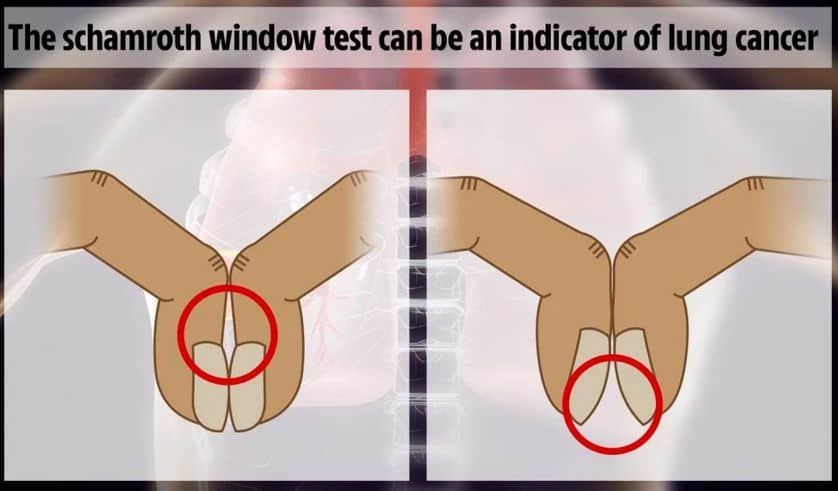Lung cancer is one of the most common and serious types of cancer. There are usually no signs in the early stages of lung cancer, however noticing your fingers appearing a certain way could be cause for concern.
Lung cancer signs can include coughing up blood, pain the chest when breathing, loss of appetite, and extreme fatigue. There is a lesser-known warning sign which lies in a person’s fingers.
- Scientists in Fear of This New Predator From Red Sea Eating Native Species in Mediterranean
- Does This Mean We Stopped Being Animal and Started Being Human Due to ‘Copy Paste’ Errors?
- The One Lifestyle Choice That Could Reduce Your Heart Disease Risk By More Than 22%
- Aging: This Is What Happens Inside Your Body Right After Exercise
- Immune-Boosting Drink that Mimics Fasting to Reduce Fat – Scientists ‘Were Surprised’ By New Findings
Doctors are urging people to take the “diamond gap” finger test, which involves putting your nails together to see if there’s a diamond-shaped space between your cuticles.
If there isn’t space, this is a sign of finger clubbing – which is a common symptom of lung cancer.
Nail or finger clubbing is characterised by specific changes around and under the toe and fingernails that are caused by certain diseases.
According to experts, finger clubbing happens in more than 35 percent of people with lung cancer.

Among various types of thoracic cancers, lung cancer is responsible for about 80% of nail clubbing cases.

It tends to happen in stages with the base of the nail becoming soft and the skin next to the nail bed becoming shiny before the nails begin to curve more than normal.
The ends of the fingers may also get larger as a result of this too.
It’s thought to be caused by increased blood flow to the finger area, leading to the accumulation of fluid in the soft tissues at the ends of the fingers – but it’s not entirely clear why this happens.
It’s worth noting that finger clubbing doesn’t necessarily mean you definitely have lung cancer – and there are lots of reasons why your fingers may present this way.
Despite this, it is important to rule out cancer so make sure you see your GP as soon as possible to establish the cause.
Unfortunately, lung cancer is often diagnosed late because it doesn’t usually cause noticeable symptoms until it has spread through the lungs or into other parts of the body.
This means that for many people the cancer has already spread when they are diagnosed.
In general, about one in three people with the illness live for at least a year after they’re diagnosed and about one in 20 people live for at least ten years.
However, it is worth noting that survival rates can vary widely, depending on how far the cancer has spread at the time of diagnosis –early diagnosis can make a big difference.
Image Credit: Getty
